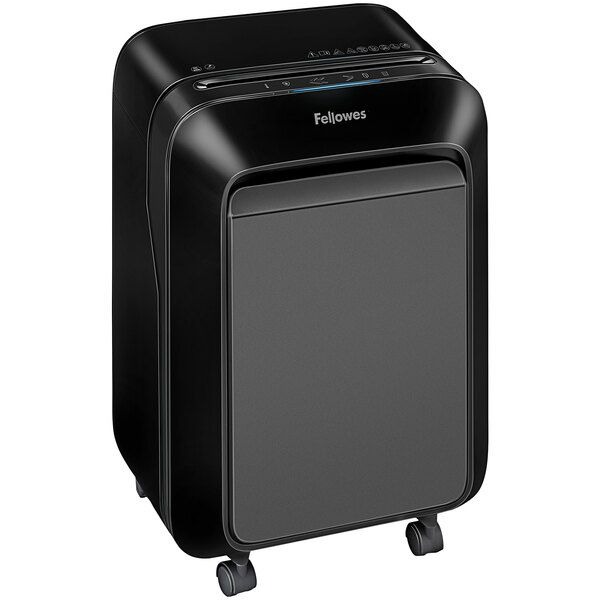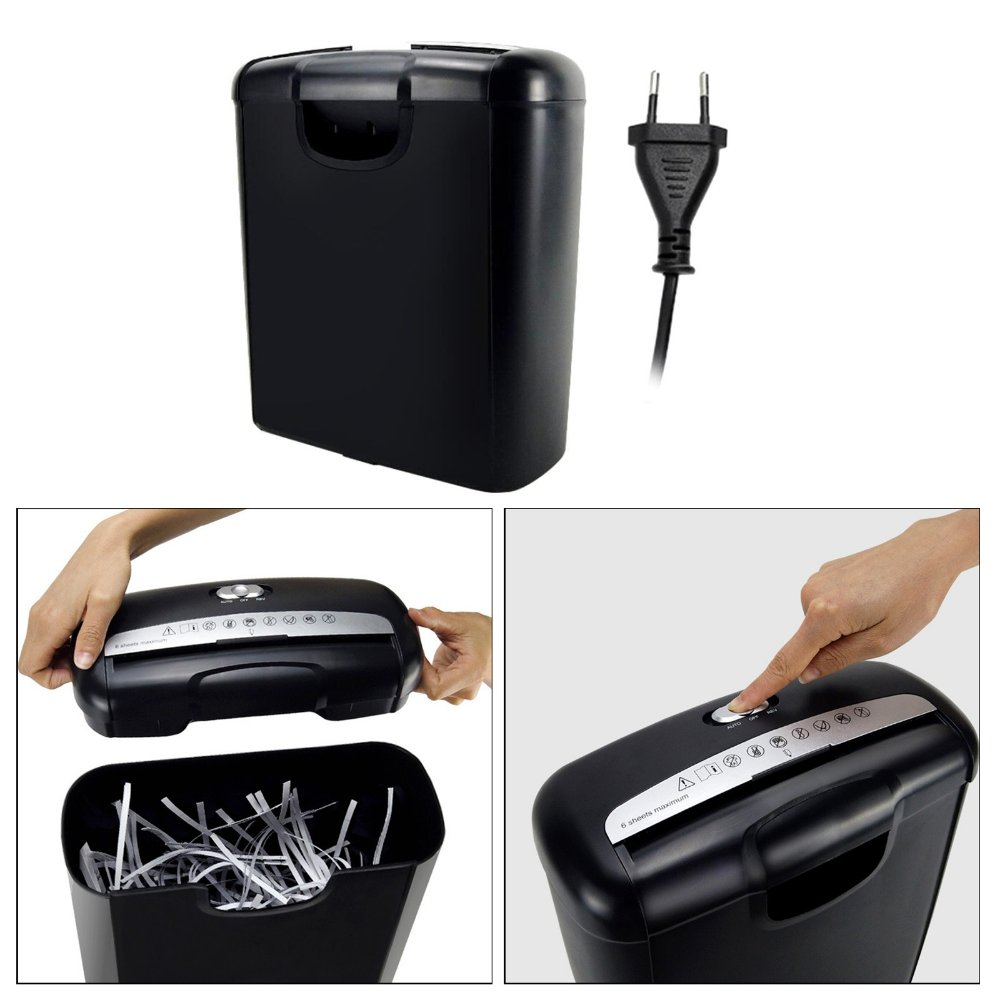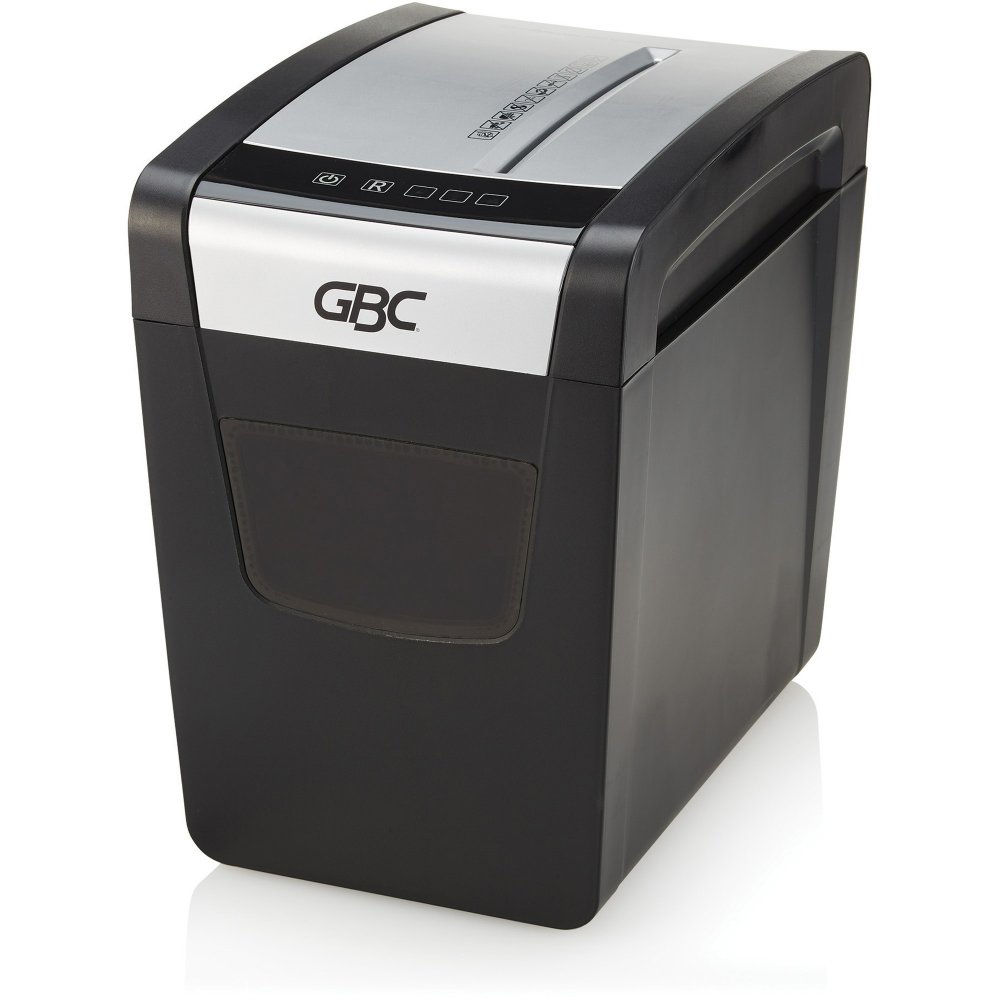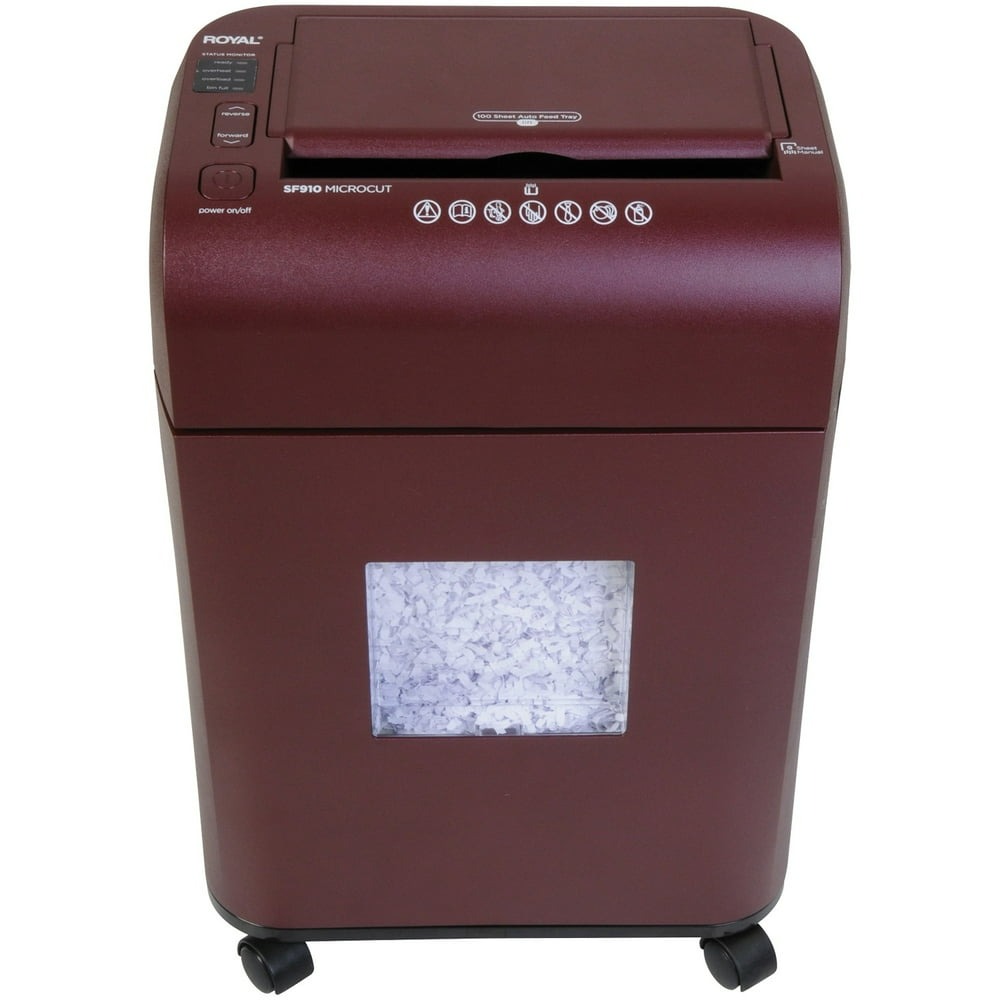The Importance of a Paper Shredder in Office Settings
Ensuring the confidentiality of sensitive documents is vital in any office environment. A paper shredder for office use plays a crucial role in achieving this. It helps to prevent sensitive information from falling into the wrong hands by destroying documents effectively. By shredding paper, businesses safeguard client trust and maintain compliance with privacy laws.
Moreover, paper shredders help in managing waste better. They reduce the volume of paper waste and make recycling easier. Shredding outdated documents also clears up storage space, leading to a more organized office setting.
Lastly, using a paper shredder is a proactive step towards protecting against identity theft. Employees often dispose of papers that contain personal information. If not destroyed properly, such data can become a tool for fraud. Shredders ensure that personal details are cut into pieces too small for thieves to piece back together.
In summary, a paper shredder is necessary for offices for security, legal compliance, waste management, and identity protection reasons.

Different Types of Paper Shredders
When selecting a paper shredder for office use, understanding the different types available is crucial. Each type differs in functionality, security level, and how it cuts paper. Here are the most common types you will encounter:
- Strip-Cut Shredders: These are the most basic paper shredders. They cut documents into long, vertical strips. Strip-cut shredders are suitable for general document destruction but offer the lowest security level.
- Cross-Cut Shredders: A step up in security, cross-cut shredders slice papers both vertically and horizontally. This results in much smaller pieces than strip-cut shredders produce. They are a good balance for offices needing higher security without the highest cost.
- Micro-Cut Shredders: For the highest security, micro-cut shredders are ideal. They turn documents into confetti-like pieces. These tiny fragments make it near impossible to piece together shredded information. They are perfect for destroying highly confidential documents.
- Cardboard Shredders: Some offices need to shred more than paper. Cardboard shredders cut through thicker materials. They are great for packaging waste management.
- Auto-Feed Shredders: Designed for efficiency, auto-feed shredders allow you to load a stack of papers and let the machine do the work. This is ideal for offices with high-volume shredding needs.
- High-Security Shredders: These shredders are often used by government agencies and are designed to meet specific security standards. They cut paper into tiny particles that are nearly impossible to reassemble.
- Specialized Shredders: For special needs, there are shredders that can handle items like CDs, credit cards, and hard drives.
Consider your office’s specific needs when choosing between these different paper shredder types. Remember to weigh the balance between security requirements and the volume of shredding you anticipate. A paper shredder for office can vary greatly, so make sure the one you select aligns with your office’s demands.
Key Features to Consider When Buying an Office Paper Shredder
Picking the right paper shredder for office use involves more than just choosing a type. There are several key features you must look at to ensure you get the best fit for your needs. Here are these features to take into account:
- Shred Size and Security Level: Match the shred size and security level to the sensitivity of documents you handle. Micro-cut shredders offer the highest security with the smallest shred size.
- Sheet Capacity: This tells you how many sheets the shredder can handle at once. A higher sheet capacity is time-efficient for larger offices with more documents to shred.
- Speed and Run Time: Consider how fast the shredder works and how long it can operate continuously. Faster shredders with longer run times increase productivity.
- Noise Level: Office shredders should be quiet enough to not disrupt the work environment. Look for models with low noise output.
- Bin Size: A larger bin size means less frequent emptying, which can be a convenience in a busy office. It also impacts how often shredding needs to be attended to.
- Safety Features: Features like auto shut-off, safety locks, or advanced sensors can help prevent accidents. Make sure the shredder you choose is equipped with adequate safety functions.
- Warranty and After-Sales Service: A good warranty can be a sign of a quality product. Also, reliable after-sales service is essential for maintenance and repairs.
- Additional Functions: Some shredders come with extra functions like the ability to shred credit cards, CDs, or have anti-jam technology. Assess which additional features will benefit your office management.
When considering these features, aim to strike a balance between security needs and convenience. Ensure the paper shredder for office you select is practical for your day-to-day operations while sufficiently protecting your sensitive information.

Balancing Security with Throughput: What to Look For
Choosing the right paper shredder for office use is a balancing act between security and throughput. Security ensures sensitive data is destroyed beyond recovery. Throughput relates to the volume of shredding that your office can handle at a given time. Here’s what to consider when seeking that balance:
- Security Needs: Assess the confidentiality level of the documents you will shred. If you handle highly sensitive data, opt for micro-cut shredders. They provide the best security by cutting papers into tiny pieces.
- Shredding Volume: Offices with large amounts of paper to shred should look for models with higher sheet capacity. This speeds up the process and boosts productivity.
- Speed Requirement: A faster shredder can save time. However, it should also maintain a high level of security. Ensure that speed does not compromise the cut quality.
- Frequency of Use: If you are shredding documents constantly, choose a shredder that can run continuously for longer periods. This means less downtime and more work done.
Achieving the right balance means considering your office’s specific needs. A paper shredder for office should offer enough security to protect against data breaches. At the same time, it must manage the daily load of shreddable material. Evaluate what you shred, how often, and in what quantity. Then match your shredder to these demands. With the right balance, you can maintain efficiency while ensuring the safety of confidential information.
The Pros and Cons of Various Paper Shredder Models
When you’re in the market for a paper shredder for office, it’s important to weigh the pros and cons of the models available. Each has its unique advantages and limitations. Here’s a breakdown to guide your choice:
Strip-Cut Shredders:
- Pros: They are cost-effective and easy to maintain. Their simplicity makes them a common choice for low security needs.
- Cons: They provide the least security. The strips can be reassembled if someone is determined.
Cross-Cut Shredders:
- Pros: Offer more security than strip-cut by turning papers into small chunks. They are still reasonably priced for most office budgets.
- Cons: They generate more waste than strip-cut and can require more frequent maintenance.
Micro-Cut Shredders:
- Pros: Best for high-security demands. These models turn paper into tiny particles, next to impossible for reconstruction.
- Cons: They tend to be more expensive and can have slower shredding speeds due to the fine cut.
Cardboard Shredders:
- Pros: They can handle thick materials, perfect for offices that deal with heavy-duty shredding.
- Cons: Not necessary if you only shred paper. They can take up more space and cost more.
Auto-Feed Shredders:
- Pros: Ideal for high-volume needs, these shredders allow you to load and leave, saving time.
- Cons: The convenience comes with a higher price tag. They may also experience jams if not loaded properly.
High-Security Shredders:
- Pros: Offer the highest level of security, often meeting government standards for document destruction.
- Cons: Can be the most expensive and have lower sheet capacities due to fine cutting requirements.
Specialized Shredders:
- Pros: Useful for shredding beyond paper, like CDs or credit cards, fulfilling all office needs.
- Cons: They might not be as effective with paper or could be an unnecessary feature for some offices.
Your choice will depend on your office’s document sensitivity, budget, and shredding volume requirements. Be sure to select a paper shredder for office that aligns with your specific needs.

How to Use and Maintain Your Office Paper Shredder
Ensuring the effective and prolonged use of your paper shredder for office involves proper use and regular maintenance. Here are practical guidelines to keep in mind:
- Read The Manual: Always start by reading the user manual. It contains specific instructions for your shredder model.
- Feed Properly: Do not exceed the sheet capacity. Overloading can cause jams and damage the shredder.
- Oil Regularly: Lubricate the shredder blades to maintain smooth operation. Use the oil recommended by the manufacturer.
- Run in Reverse: If you encounter a jam, use the reverse function to clear it. Avoid forcing the paper through.
- Empty the Bin: Don’t wait for the bin to overflow. Regularly empty it to prevent jams and keep performance high.
- Avoid Unshreddable Items: Only shred materials your shredder is designed to handle, like paper or approved items like credit cards.
- Clean Sensors: Use a soft cloth to gently clean sensors and remove dust buildup. This helps prevent operational issues.
- Schedule Maintenance: Set a regular schedule for maintenance checks. This can prevent unexpected breakdowns.
Following these steps will help maintain your paper shredder for office in good condition, ensuring security and efficiency in your document disposal processes.
Factors That Affect the Price of Paper Shredders
When shopping for a paper shredder for office, prices can vary widely. Several factors influence the cost:
- Security Level: High-security shredders tend to be more expensive. They provide finer cuts for sensitive documents.
- Shredding Capacity: Models that can shred more sheets at once or handle heavy-duty tasks usually cost more.
- Speed and Efficiency: Faster shredders with better throughput come with a higher price tag.
- Brand Reputation: Established brands with proven reliability might charge more for their shredders.
- Additional Features: Shredders with features like anti-jam technology, energy-saving modes, or auto-feed functions often have a higher cost.
- Material Quality: Shredders built with high-quality, durable materials are typically more expensive but offer longer lifespans.
- Maintenance and Servicing: Units that come with comprehensive warranties or service plans may be priced higher upfront.
- Market Trends: Supply and demand, as well as new technological developments, can affect shredder prices.
Understanding these factors can help you find a paper shredder for office that fits your budget and meets your needs. Think about what features are essential for your office and what you can compromise on to get the best value.
Paper Shredder Safety Tips for Office Environments
Working with a paper shredder for office is typically straightforward. However, safety should always be a priority to prevent accidents and maintain a safe work environment. Here are practical safety tips to follow:
- Educate Employees: Train your staff on proper shredder use. Ensure they understand both operations and safety features.
- Keep Loose Clothing Away: Advise employees to keep ties, jewelry, and long hair away from the shredder feed.
- Use Safety Features: Always engage safety locks or shields if your shredder has them. They are there to protect users.
- Supervise Children and Pets: If present in the office, keep children and pets at a safe distance from operating shredders.
- Turn It Off When Not in Use: Power down the shredder when it’s not actively being used to avoid accidental activation.
- Do Not Bypass Safety Mechanisms: Never try to disable or bypass any of the built-in safety mechanisms of the shredder.
- Only Shred Appropriate Materials: Shred only materials that the machine is designed to handle as per manufacturer’s guidelines.
- Keep Hands Clear: Ensure hands are clear of the paper entry area when the shredder is in use.
- Troubleshoot Safely: Always turn off and unplug the shredder before trying to clear a jam or perform maintenance.
- Check for Safety Certification: When buying a shredder, look for one that has safety certifications from recognized bodies.
Following these safety tips can help safeguard your employees and enhance the operational longevity of your paper shredder for office. Remember that safe practices are not just guidelines, but essential rules to prevent harm and protect sensitive information.
